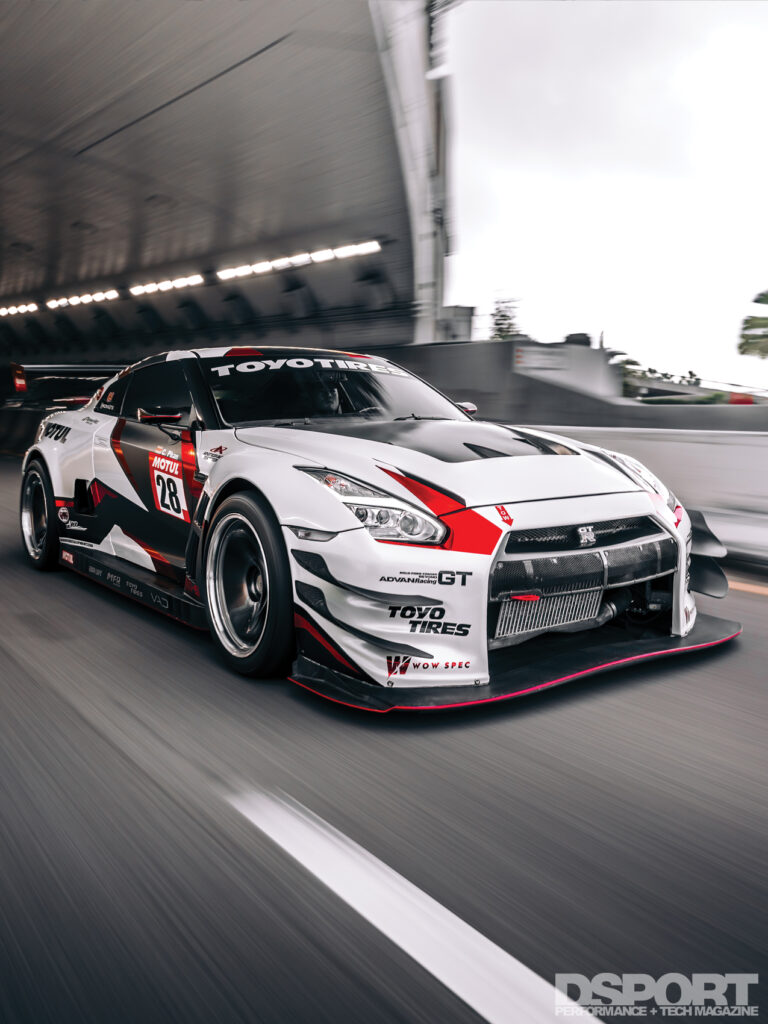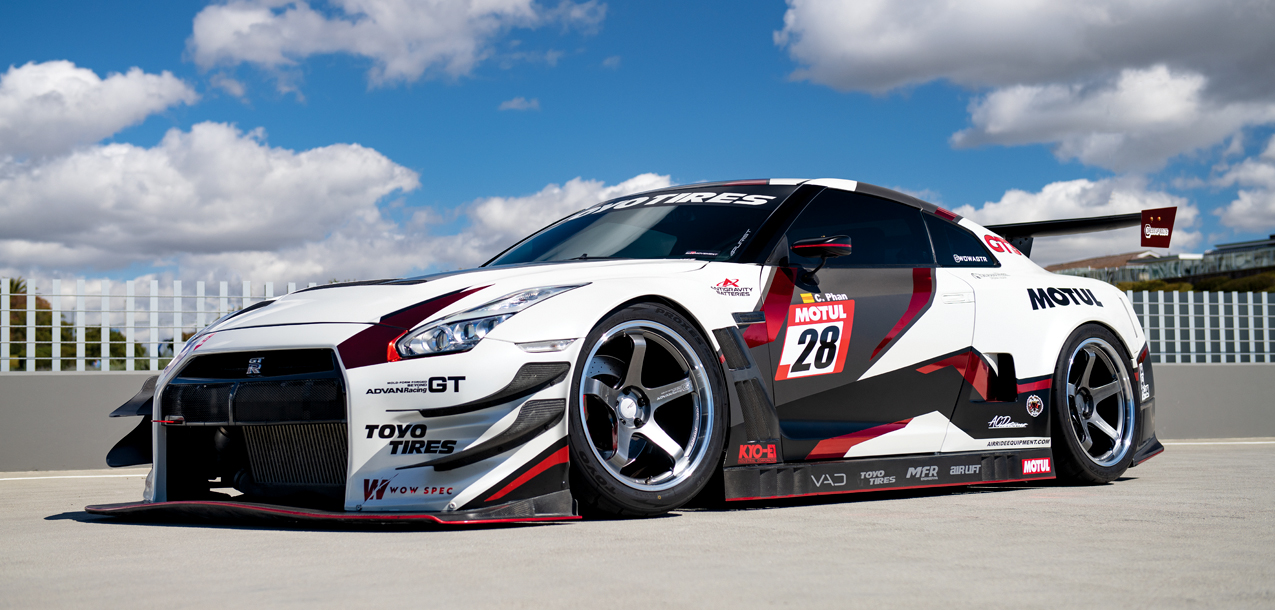DSPORT Issue #266
Text by APEworks // Photos by Joe Singleton and @focusdmedia
With a rich racing history that spans decades, Nissan’s Skyline GT-R is synonymous around the world with luxurious performance cars that generally kick ass in the name of grand tourers everywhere. Americans nearly lost their minds when it was revealed that the R35 variant of the GT-R would finally be sold new in the States, but some of that infatuation died down when Nissan revealed the R35 would be based upon a new grand tourer architecture that wouldn’t wear the name “Skyline.” Still, when the car was finally released, it did truly embody the spirit of the budget supercar grand tourer -ample power on command, a sporty but civilized exhaust note, and several overall vehicle modes that could fine-tune the vehicle’s suspension and acceleration characteristics for the occasional stoplight or even on-track/on-circuit excursion.
Like many throughout the years, Chris Phan had some reverence for the esteemed GT-R platform. “I’ve always been a Nissan fan, especially growing up with the Skyline generation,” Phan explained. “I chose the R35 because at the time it was very fast for what it cost and I think it’s a fun car.” True to its name, the new-to-him R35 had the grand touring part down with its mostly stock powerplant and a body kit that Phan wasn’t fond of. “The thing that I liked the most was the power, even though it was near stock. Coming from a G35, this was easily 2-to-3 times the power to all four wheels!”
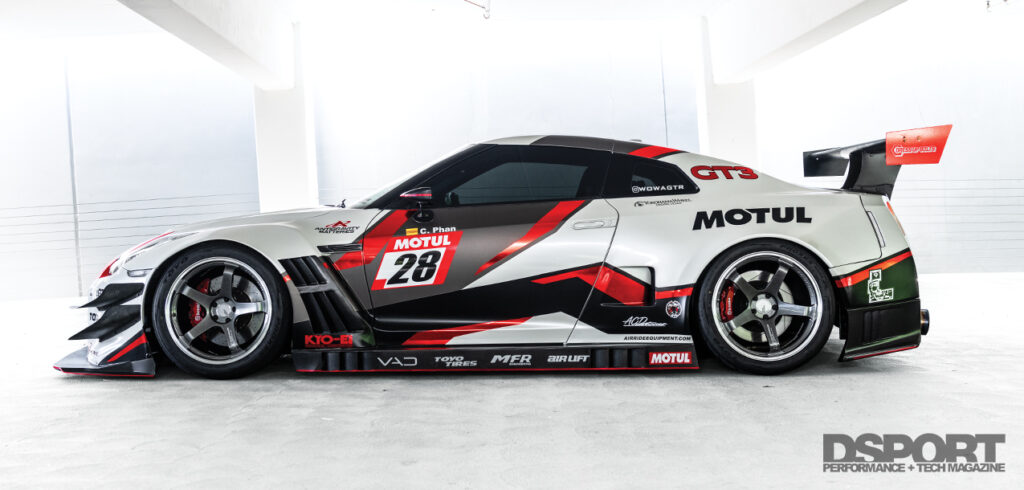
Street Fighter
Because the existing body kit detracted from Phan’s vision, Phan removed it while planning for the as-of-yet unknown new aero kit. “My goal was to just build something that hasn’t been seen before and I was going down that route and decided to produce a GT3 build.“ The homologated GT3 class consists of high-powered grand touring and sports cars including the likes of the Lamborghini Huracan, Porsche 991.2, Ferrari 488 and the R35 Nissan GT-R in class-defined configurations that aim to balance power, handling and other performance parameters to narrow the range of available race cars in a single competition to fairly equitable levels, giving the driver and the team’s track management skills the ultimate responsibility in winning or losing a race.
Starting at the front, Phan sourced a GT3-spec GT-R bumper and carbon fiber canards. He topped this off with a dry carbon GT3-spec splitter that screams “this street machine means business.” These flare naturally into the front GT3 fenders, vented to maximize flow-through cooling ability from air entering the front opening. The two-inch-per-side added width adds a look that is both subtle and aggressive. In road and circuit race cars, this extra space allows safe running of a wider wheel and tire combination, meaning more grippy surface area per side to keep the car going in the proper and intended direction. A Liberty Walk v2 hood provides additional engine bay intake and exhaust air vents. The GT3-spec side skirts continue the accented bodylines on either side of the vehicle, running into the NISMO GT-R GT3 rear bumper. An AMS carbon trunk lid and the Do Luck GT wing with custom-made mounts close out the functional fashion accessories. All aero add-ons were meticulously molded into existing bodywork for a seamless conversion to a homologated GT3 specification, including rerouting the gas filler neck into the trunk area.
Power Aid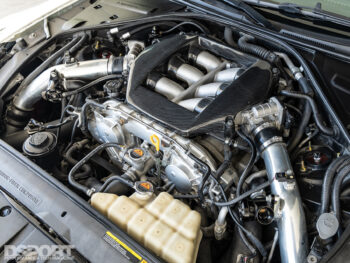
Direct from the factory, the potent VR38DETT engine allows for supercar performance and many have taken the platform comfortably and reliably into the 4-digit-horsepower realm. That originally wasn’t the case for Phan, who found the car quite enjoyable with the few bolt-on goods it wore at the time of purchase. As it stands, most of the factory engine and turbocharger system are still in place, with plans for an almost double increase in output in the very near future.
For now, a Cobb 3-inch intake scrubs the incoming air before it’s compressed in the turbocharger and sent through the intercooler plumbing, cooling along the way via the AMS front-mount intercooler. On the fuel end of the equation, an AEM FTR fuel pump feeds the 91-octane pump juice to the AMS Performance fuel rails which in turn feed the Injector Dynamics 1050X injectors.
Byproduct spent gasses from the combustion process are routed through the factory turbochargers, exiting through a pair of AMS downpipes and ultimately into the atmosphere through a Tomei Expreme Ti 4-inch exhaust system. “I realzed that at 600 wheel horsepower (with the current mods) there’s still a lot of room for improvements,” Phan explains. “I’m aiming to get the car to at least 800-to-1,000 horsepower in the future.”
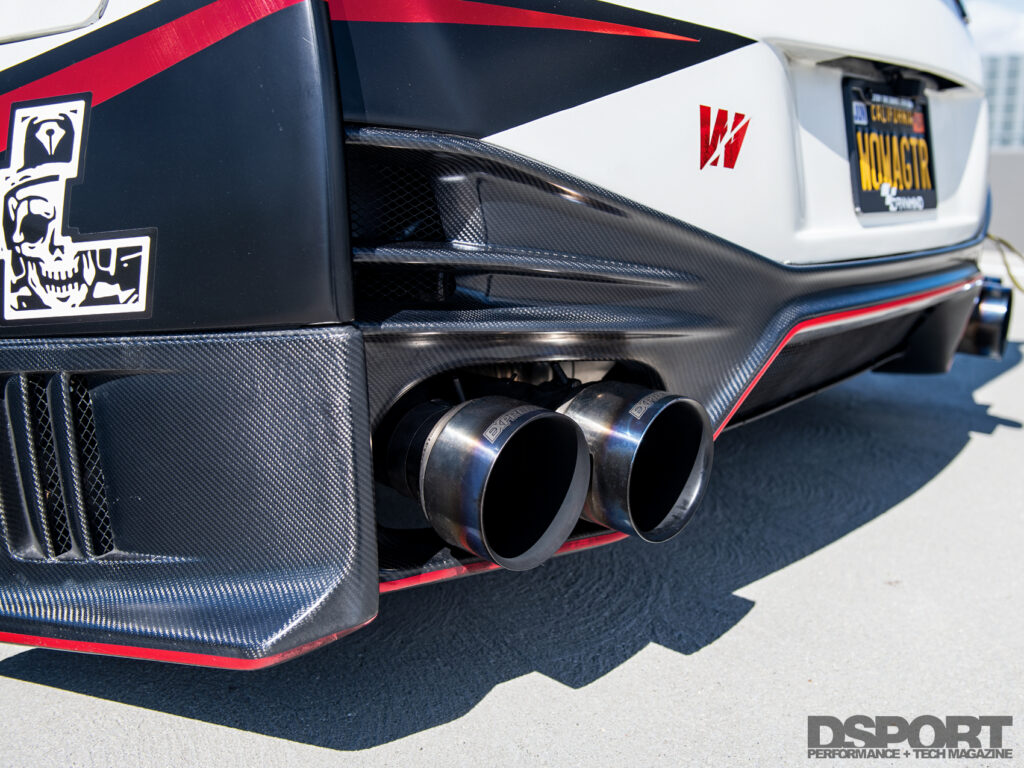
In The Wheelhouse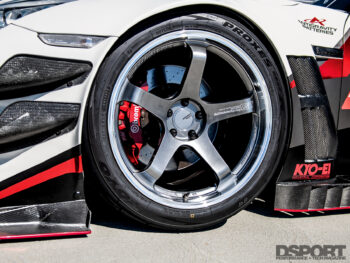
A street car that also moonlights as a circuit runner on the weekends is bound to have the least practical, sticky DOT-approved racing rubbers mounted, and Phan’s GT-R proves to be no exception. The Toyo R888Rs wrap around a set of Advan GT Beyond 20-inchers – 10-inch widths on the front coupled with 12-inch widths in the rear – and keep similar rolling diameters front-to-rear so as not to upset the R35’s ATTESA E-TS torque-distributing system. Brembo calipers and rotors clamp Endless MX72 brake pads to scrub or eliminate speed. To prepare for the high-temp, high-duress conditions on the track, Phan upgraded the factory transmission with modifications from Shep Trans, reinstalling the motiontranslating equipment after it was refreshed to Stage 1.5-level specifications.
In further anticipation of more track time, Phan had previously installed a set of JRZ Suspension Engineering RS Pro double-adjustable coilovers but quickly grew weary of the extreme caution needed to drive the GT-R in its daily forays through the wildly varying states of public road disrepair and out-of-spec driveway grades. “I think the most effective ‘upgrade’, despite it not being a proper track set up, was switching over to an airbag system,” Phan admits. The car now has a wide gamut of near-instantly available ride-heights thanks to the Air Lift Performance Suspension.
Answering To No One
While Phan’s build might have progressed differently than others starting with the same platform, he remains unapologetic about the direction his build has gone nor secretive about what it took to get him there. “(When asked) I tend to share a bit of my upbringing and determination to be able to continue working crappy jobs and climbing the corporate ladder to get to a point where I can feed this expensive hobby,” he states. “If I can do it, there’s no reason you can’t,” he adds. “I had to endure working in a suit in the hot summer sun or working on a golf course out in the pouring rain but you have to pay your dues. It just depends on how hungry you are and how badly you want it.”
